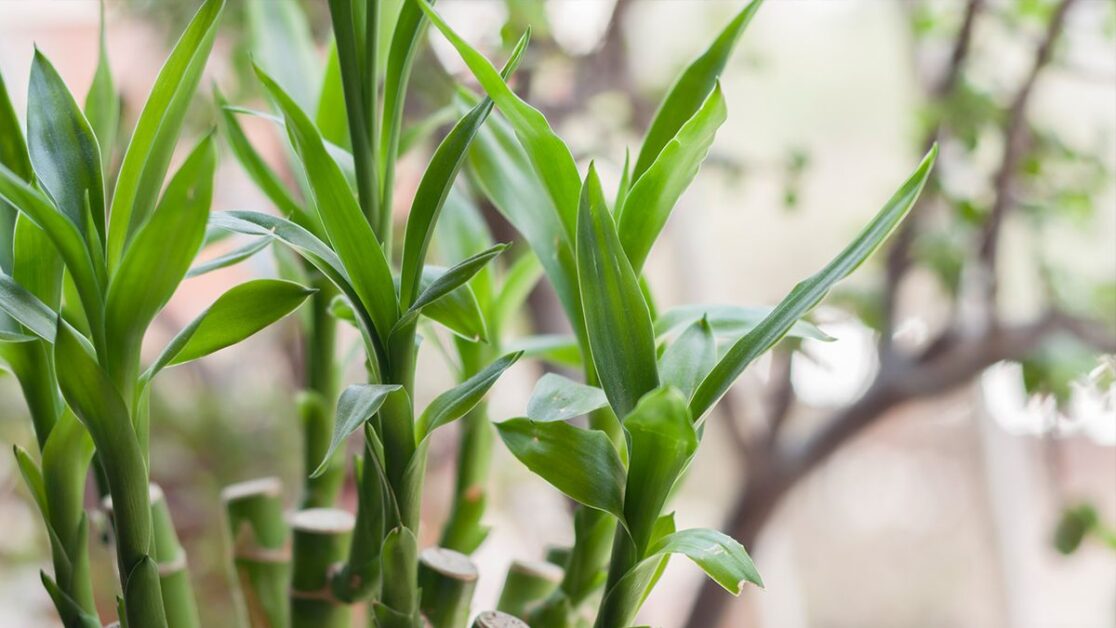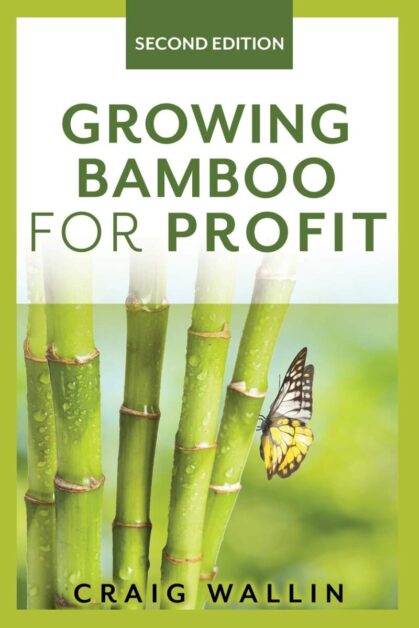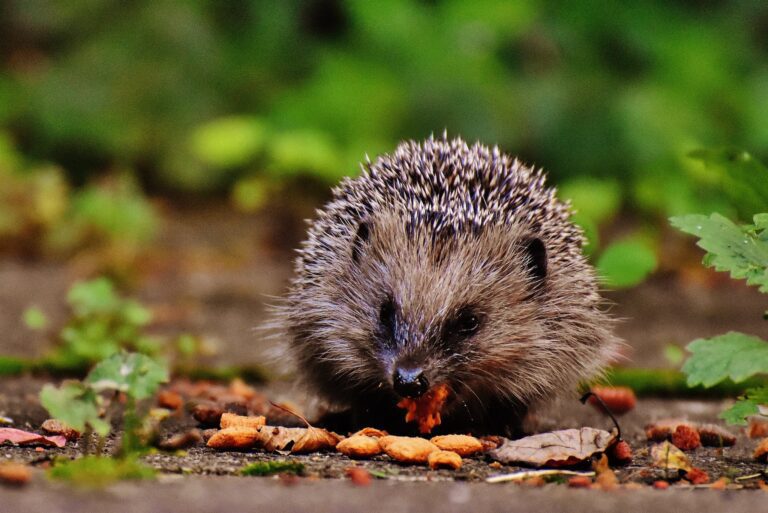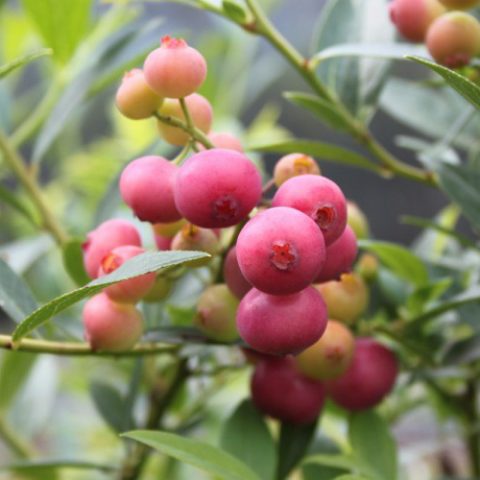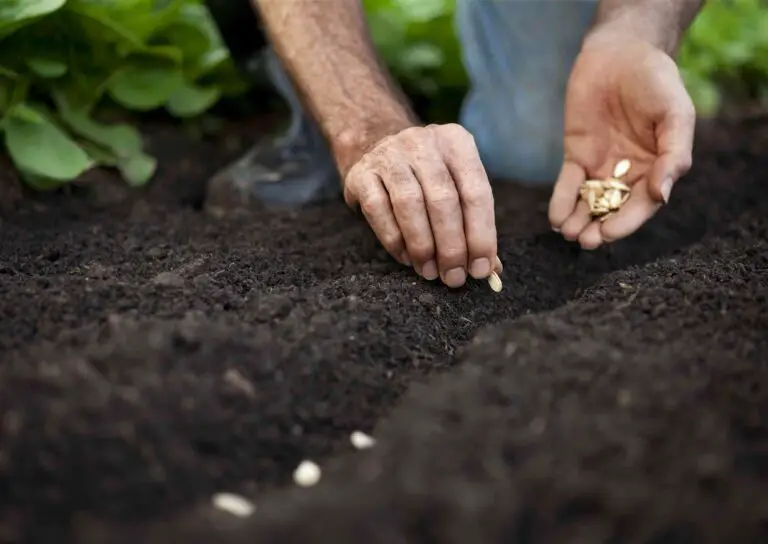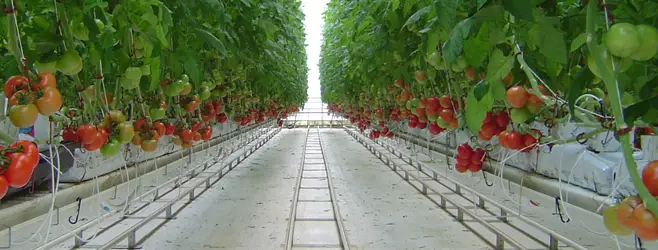Lucky Bamboo Care: Nurturing Dracaena Sanderiana
Did you know that Lucky Bamboo, a popular plant in many American homes, is not actually a bamboo but a type of Dracaena called Dracaena Sanderiana? This plant is believed to bring good fortune and positive energy, making it a must-have for any home or office. But to keep your Lucky Bamboo thriving, it’s essential to know the proper care tips.
By following our tips, you’ll not only keep your Lucky Bamboo healthy, but you’ll also maximize its potential to bring you good luck. So, whether you’re a seasoned plant parent or just starting your journey, this guide will help you keep your Lucky Bamboo thriving.
Stay tuned for our in-depth guide to Lucky Bamboo care, and let’s bring some positive energy into your space!
Table of Contents
Understanding the Basics of Lucky Bamboo
Lucky Bamboo, scientifically known as Dracaena Sanderiana, is a popular houseplant that adds a touch of elegance and tranquility to any indoor space. Despite its name, it is not actually bamboo, but rather a member of the Dracaena genus. This versatile plant is native to the tropical rainforests of West Africa and can thrive both in soil and in water, making it an ideal choice for those who are new to gardening or have limited space.
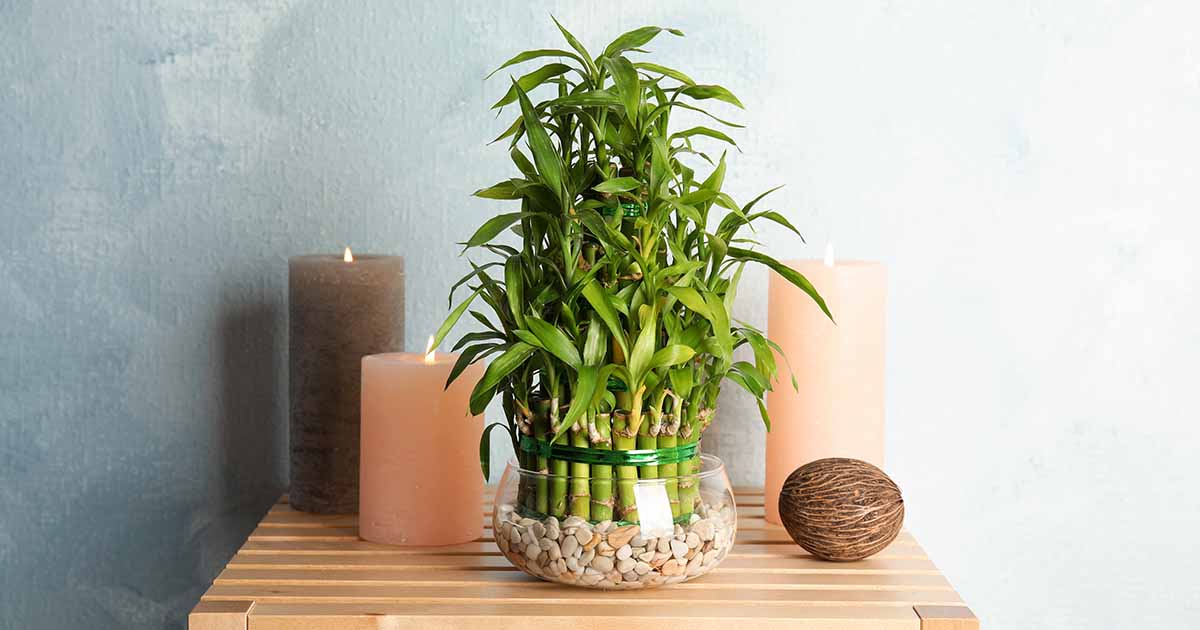
- One of the most striking features of Lucky Bamboo is its unique stalk structure, with multiple spiral patterns and clusters of lush green leaves.
- The plant is often sold in small containers filled with pebbles or water, where its roots can be easily seen.
- Lucky Bamboo is known for its ability to purify the air and improve the overall indoor environment.
- It has been found to absorb various harmful chemicals such as formaldehyde, benzene, and trichloroethylene, thus making it a truly beneficial addition to any home or office.
Its low maintenance requirements further contribute to its popularity. Lucky Bamboo is adaptable to a wide range of light conditions, from low to medium indirect light. However, it should be kept away from direct sunlight, which can scorch the leaves. Additionally, this plant is sensitive to extreme temperatures and should be kept between 65°F to 90°F (18°C to 32°C). Proper watering is crucial for the health of Lucky Bamboo.
To keep it hydrated, it is recommended to use filtered or distilled water, as tap water often contains chlorine and other chemicals that can harm the plant. Simply fill the container with water until it covers the roots, ensuring that the water level is maintained at all times.
With these basic guidelines in mind, even novice gardeners can enjoy the beauty and tranquility that Lucky Bamboo brings to their living spaces.
“Growing Bamboo for Profit” by Craig Wallin serves as an invaluable roadmap for anyone interested in delving into the world of bamboo cultivation as a business venture. Wallin’s expertise shines through as he provides practical insights, from cultivation techniques to market strategies, making the complex process accessible to aspiring bamboo entrepreneurs. While the book’s focus may not cater to hobbyists, its comprehensive approach and authoritative guidance make it an indispensable resource for those seeking success in the lucrative bamboo industry.
✅ Business Insights: Readers can expect to gain insights into the commercial aspects of bamboo cultivation, including market trends, potential revenue streams, and business management tips.
✅ Cultivation Techniques: It may provide detailed information on bamboo cultivation techniques, such as planting, care, and harvesting, tailored to maximize yield and quality.
✅ Diverse Applications: Bamboo has numerous applications beyond traditional farming, including landscaping, construction, and manufacturing, and the book may explore these potential opportunities.
✅ Author’s Expertise: Craig Wallin, as the author, likely brings considerable expertise and experience to the subject, enhancing the credibility and reliability of the information presented.
❌ Niche Topic: Bamboo farming is a specialized niche within agriculture, and readers seeking broader gardening or farming advice may find the book’s focus too narrow.
❌ Limited Availability: Depending on the reader’s location, the book may not be readily available in local bookstores or libraries, requiring them to purchase it online.
❌ Complexity: As a guide to starting a bamboo farming business, the book may delve into complex topics such as market analysis, financial planning, and regulatory compliance, which could be overwhelming for some readers.
❌ Price: The price of the book may be a consideration for some readers, particularly if they are unsure about the potential return on investment in bamboo farming or if they have budget constraints.
Choosing the Right Container for Your Lucky Bamboo
Choosing the right container for your lucky bamboo is an essential step in ensuring its growth and overall health. The container you select plays a crucial role in providing a suitable environment for the plant, allowing it to thrive in your home or office. Here are a few factors to consider when choosing the perfect container for your lucky bamboo.
- Drainage Considerations:
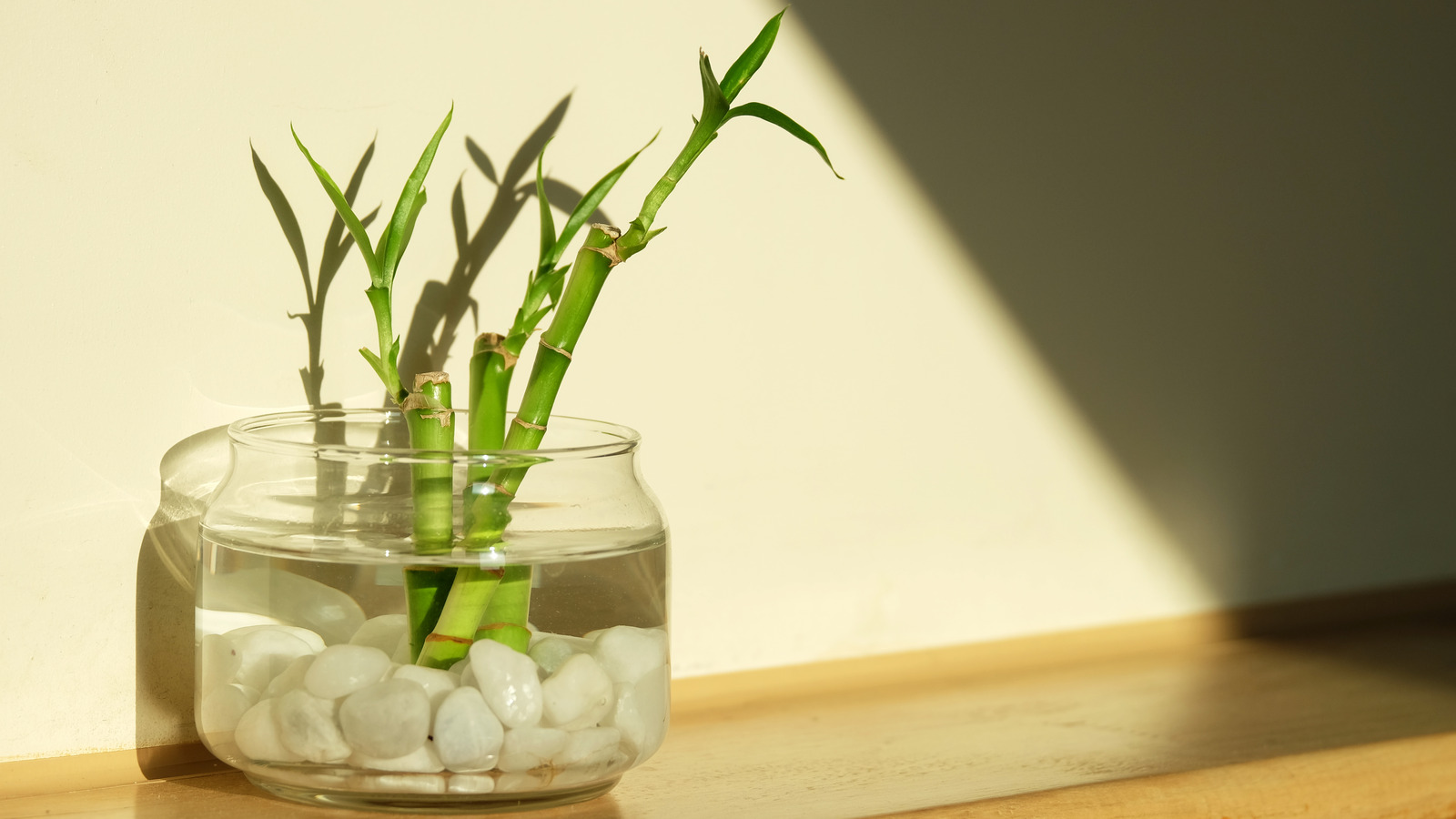
- Choose a container with good drainage to prevent waterlogging, which can lead to root rot and other issues.
- Look for containers with drainage holes at the bottom or use pebbles to improve drainage in non-draining containers.
- Container Size:
- Select a container with sufficient height to accommodate the potential growth of lucky bamboo, as it can grow tall over time.
- Ensure the width of the container allows the plant’s roots to spread comfortably, typically about one-third wider than the root ball.
- Container Material:
- Avoid containers made of materials that can leach harmful substances into the water, such as metal.
- Opt for containers made of glass, ceramic, or plastic, which are safe for lucky bamboo.
- Glass containers are popular for their aesthetic appeal and ability to showcase the plant’s roots.
By taking these factors into consideration, you can ensure that you choose the right container for your lucky bamboo, providing it with the ideal growing environment for long-term success. Stay tuned for more tips on caring for your lucky bamboo in our upcoming articles.
The Creative Co-op Hobnail Rectangle Ceramic Planter is an ideal choice for Lucky Bamboo due to its versatile design and practical features. The planter’s sleek and stylish appearance complements the elegant aesthetic of Lucky Bamboo, enhancing its overall appeal as a decorative element in any room. Additionally, the durable ceramic construction provides a stable and secure base for the Lucky Bamboo, ensuring its longevity and stability.
The presence of a drainage hole at the bottom of the planter facilitates proper water drainage, preventing overwatering and maintaining the optimal moisture levels for the Lucky Bamboo’s health. Overall, this planter offers both aesthetic charm and functional benefits, making it an excellent choice for showcasing Lucky Bamboo in any indoor setting.
- Stylish Design: The hobnail texture and rectangular shape of the planter give it a unique and stylish appearance, adding aesthetic appeal to any space.
- Versatile Use: This planter is suitable for various types of plants, including lucky bamboo, succulents, herbs, and small flowers, offering versatility in plant choices.
- Durable Construction: Made of ceramic, the planter is sturdy and durable, ensuring long-lasting use indoors or in covered outdoor areas.
- Drainage Hole: It features a drainage hole at the bottom, promoting proper water drainage and preventing overwatering, which is crucial for plant health.
- Ideal Size: With dimensions suitable for small to medium-sized plants, this planter is perfect for tabletop or countertop display, adding greenery to any room without taking up too much space.
- Limited Size Options: The planter may not be suitable for larger plants or for those looking to create a statement piece with their planters, as it is designed for smaller plant arrangements.
- Fragility: While ceramic is durable, it can be prone to chipping or breaking if mishandled, so users need to exercise caution when moving or cleaning the planter.
- Single Drainage Hole: Some users may prefer multiple drainage holes or a removable saucer for easier maintenance and to prevent water damage to surfaces.
- Price: Depending on individual budgets, the price of the planter may be considered relatively high compared to similar options on the market.
- Limited Color Options: The planter may only be available in a limited range of colors, limiting choices for those seeking specific color schemes to match their decor.
The Importance of Proper Watering for Lucky Bamboo
Proper watering is crucial to the health and vitality of lucky bamboo plants. As masters of hydroponics, we understand the importance of maintaining the right balance of moisture for optimal growth.

Lucky bamboo (Dracaena sanderiana) is a popular indoor plant known for its resilience and association with good feng shui. Here are some care tips to keep your lucky bamboo thriving:
- Light:
- Place your lucky bamboo in bright, indirect sunlight. It prefers conditions similar to those found under a rainforest canopy.
- Avoid direct sunlight, as it can scorch the leaves.
- If the plant starts stretching or the green color fades, provide more light.
- Rotate the plant regularly to ensure even light exposure.
- Watering:
- Lucky bamboo grows well in good quality water.
- If you’re growing it in water, make sure the container always covers the roots.
- Change the water every week to prevent root rot.
- Use distilled or filtered water to avoid harmful chemicals and minerals.
- Regular tap water, especially with high fluoride levels, can cause leaf yellowing and browning.
- Container and Pebbles:
- When repotting, choose a clean container slightly larger than the current one.
- If your lucky bamboo is growing in a pot of pebbles, gently dig it up and clean the pebbles before placing them in the new container.
- Nestle the roots within the pebbles to provide stability and support.
Remember that lucky bamboo is toxic to cats and dogs, so keep it out of their reach. With proper care, your lucky bamboo will thrive and bring positive energy to your space! 🌿
Providing Adequate Lighting for Your Lucky Bamboo
When it comes to providing adequate lighting for your lucky bamboo, it’s important to consider its natural habitat and sunlight requirements.

Lucky bamboo, scientifically known as Dracaena sanderiana, is native to the understory of rainforests in Southeast Asia, where it thrives in low light conditions. As a result, it is crucial to provide indirect, filtered light for your lucky bamboo to ensure its optimal growth and well-being.
- Indirect Light: Lucky bamboo prefers bright, indirect light. Avoid placing it in direct sunlight, as this can lead to leaf scorching and discoloration.
- Ideal Placement: Position your lucky bamboo near a north or east-facing window. These orientations provide gentle morning or late afternoon sunlight without the harshness of direct rays.
- Artificial Lighting: If natural light is insufficient, consider using fluorescent or LED lights. Opt for lower-intensity bulbs to mimic the plant’s native environment.
By providing the right amount of indirect light, you can ensure that your lucky bamboo thrives and brings beauty and tranquility to your space. Stay tuned for our next article, which will delve into maintaining the ideal temperature for lucky bamboo.
Maintaining the Ideal Temperature for Lucky Bamboo
- Maintaining the ideal temperature is crucial for the health and growth of lucky bamboo.
- This resilient plant thrives in moderate temperatures similar to those found in most indoor spaces.
- Lucky bamboo prefers temperatures between 65°F and 90°F (18°C to 32°C) during the day and slightly cooler temperatures at night.
- Extremes in temperature should be avoided, as they can harm the plant.
- Consistency is key when it comes to temperature maintenance for lucky bamboo.
- Sudden fluctuations or drastic changes in temperature can shock the plant and lead to leaf browning, wilting, or even death.
- It is important to keep lucky bamboo away from drafty areas, radiators, air conditioning vents, and direct sunlight, as these can result in temperature fluctuations.
- To maintain a stable and suitable temperature, place your lucky bamboo in an area with a steady room temperature and away from any heat or cooling sources.
Fertilizing Your Lucky Bamboo: Dos and Don’ts
Fertilizing your lucky bamboo is essential to ensure its healthy growth and vibrant green leaves. However, it is important to follow the dos and don’ts to provide the right nutrition without causing harm to your plant.
| Dos | Don’ts |
|---|---|
| Use a balanced liquid fertilizer with equal amounts of nitrogen, phosphorus, and potassium. | Avoid over-fertilizing. Lucky bamboo is sensitive to excess nutrients. |
| Dilute the fertilizer to half or quarter strength before applying. | Don’t use tap water directly for fertilizing. It may contain harmful chemicals. |
| Fertilize once a month during the growing season (spring and summer). | Don’t fertilize during winter months. Lucky bamboo enters a dormant phase. |
| Apply the fertilizer to the water if your lucky bamboo is grown in water. | Don’t allow fertilizer to accumulate on leaves or roots. Rinse off any spills. |
| Observe the plant for signs of yellowing leaves (indicating nutrient deficiency) and adjust fertilization accordingly. | Don’t use slow-release granules. They can release too much fertilizer. |
By following these dos and avoiding the don’ts, you can ensure that your lucky bamboo receives adequate nutrients to thrive and bring a touch of serenity and beauty to your home or office space.
Pruning and Shaping Lucky Bamboo for Optimal Growth
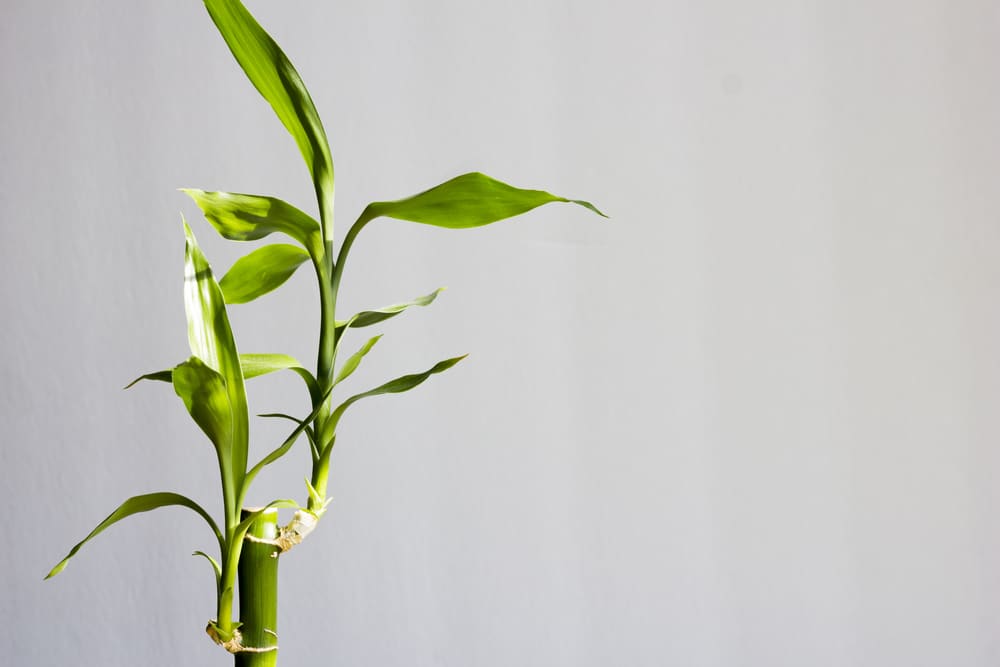
Use clean and sharp pruning tools to prevent damage to the lucky bamboo plant during trimming.
Identify areas requiring pruning, such as yellow or brown leaves, overgrown stems, or branches that are crossing or rubbing against each other.
Carefully remove unwanted parts by making clean cuts just above the node or joint where the leaf or stem meets the main stalk.
Shape the lucky bamboo plant to add elegance and uniqueness by training it to grow in curved or spiral shapes.
Gently bend the stem and secure it with plant-friendly ties to encourage the desired shape.
Over time, the plant will adapt to its new shape, resulting in a visually striking feature that enhances the overall aesthetic of the lucky bamboo plant.
Remember, pruning and shaping should be done with care and minimal disruption to the plant. It is advisable to research specific pruning and shaping techniques for your particular variety of lucky bamboo to ensure the best results.
Preventing and Treating Common Pests and Diseases in Lucky Bamboo
To maintain the health and vitality of your lucky bamboo plants, it is essential to be aware of the common pests and diseases that can affect them. By taking preventive measures and promptly treating any issues that arise, you can ensure that your bamboo thrives in its environment.
Here are some key points regarding the care and potential issues related to lucky bamboo (Dracaena sanderiana):
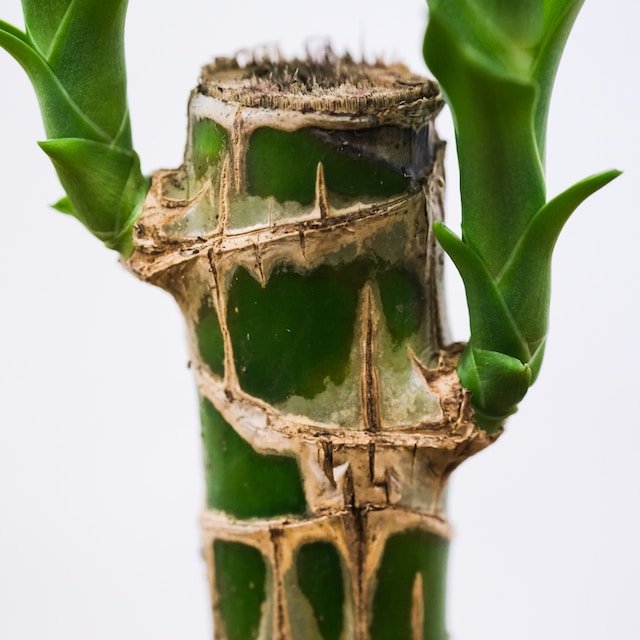
- Spider Mite:
- These tiny insects thrive in warm and dry conditions.
- Inspect your bamboo regularly for signs of tiny yellow or white specks on the leaves.
- If you notice spider mites, take immediate action:
- Use a gentle insecticidal soap or a neem oil solution to eliminate them.
- Follow the instructions on the product label.
- Repeat the treatment as necessary.
- Spider mites can drain essential nutrients and cause leaf yellowing and curling.
- Powdery Mildew:
- Powdery mildew is a fungal disease characterized by a white, powdery substance on the foliage.
- It thrives in humid conditions.
- To prevent powdery mildew:
- Ensure adequate ventilation around your plants.
- Avoid over-watering, as excessive moisture creates a favorable environment.
- If powdery mildew appears:
- Remove affected leaves.
- Treat the plant with a fungicidal spray or a baking soda solution.
- Protect the overall health of your lucky bamboo.
Remember, timely prevention and treatment are crucial in maintaining the well-being of your lucky bamboo plants. Regularly inspect your plants for any signs of pests or diseases, and take immediate action if necessary. By doing so, you can ensure that your lucky bamboo thrives and remains an enchanting addition to your home or office environment.
Transplanting Lucky Bamboo: When and How to Do It
When it comes to transplanting your lucky bamboo, proper timing and technique are essential for maintaining the health and vitality of this beautiful plant.
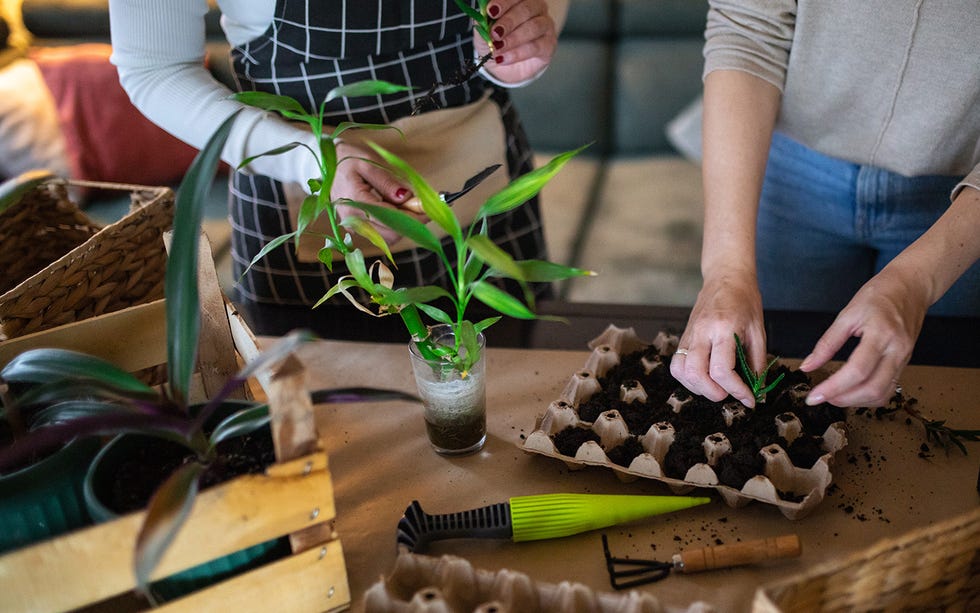
- Lucky bamboo, scientifically known as Dracaena sanderiana, is native to the tropical rainforests of West Africa and is prized for its lush foliage and symbolic representation of good luck and prosperity.
- Transplanting lucky bamboo is typically carried out when the plant has outgrown its current container or to rejuvenate its soil for better growth.
- The ideal time for transplanting is during the spring or early summer when the plant is actively growing.
- It is crucial to select a well-draining potting mix designed for indoor plants or specifically for lucky bamboo, avoiding regular garden soil that can compact and impede growth.
- Before transplanting, ensure to clean the new container thoroughly and fill it with fresh potting mix, leaving ample space for the lucky bamboo’s root system to thrive.
Reproducing Lucky Bamboo: Propagation Techniques
One of the fascinating aspects of lucky bamboo is its ability to be easily propagated, allowing you to expand your collection or share these beautiful plants with others. Lucky bamboo can be propagated through various techniques, including water propagation and division.
Water propagation
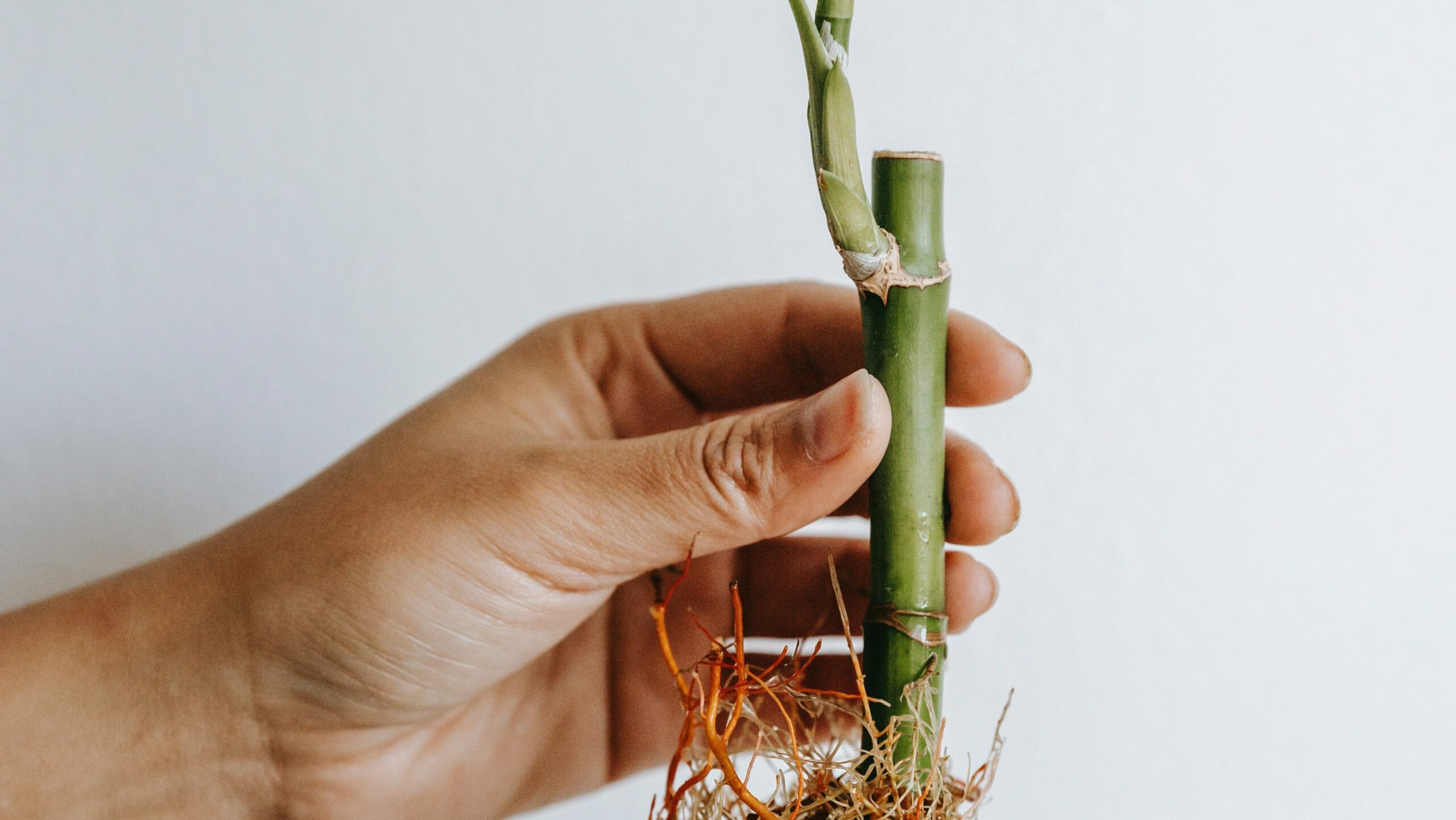
Water propagation is a popular method of reproducing lucky bamboo and involves placing a stalk in a container of water and allowing it to develop roots. To do this, select a healthy stalk with at least two nodes and remove any leaves or stems from the lower node. Place the stalk in a container filled with water, making sure the node is submerged. Over time, roots will begin to grow from the submerged node, and you can transfer the plant into a pot with a well-draining soil mix once the roots have developed.
division
Another propagation technique for lucky bamboo is through division. This involves separating the stalks of an existing plant to create new individual plants. Carefully remove the plant from its container and gently separate the stalks, ensuring that each division has an adequate number of healthy roots. Repot each separated division into its own container with fresh soil, making sure to provide the necessary care and maintenance for optimal growth.
By utilizing these propagation techniques, you can multiply your lucky bamboo collection and enjoy the beauty of these plants in various parts of your home or office.
Arranging Lucky Bamboo in Feng Shui Displays
:strip_icc()/bamboo-gold-tray2-B84oLnVMKQqANR5-d_50lh-af77150d3be14562a496198ad9e81140.jpg)
- Lucky bamboo, scientifically known as Dracaena sanderiana, is native to the tropical rainforests of West Africa and is believed to bring positive energy and good fortune in Feng Shui.
- The number of stalks used in the arrangement is important in Feng Shui, with certain numbers symbolizing specific benefits.
- Three stalks represent happiness, wealth, and longevity, while five stalks symbolize the five elements of nature – wood, fire, earth, metal, and water.
- Lucky bamboo is typically placed in the Eastern or Southeastern area of the space, as these directions are associated with wealth and abundance.
- Ensuring that the stalks are arranged in a visually pleasing manner, with each stalk standing upright and evenly spaced, can help create a balanced and harmonious energy flow.
- Lucky bamboo can be transplanted during the spring or early summer when the plant is actively growing, using a well-draining potting mix specifically formulated for indoor plants or lucky bamboo.
- Different areas of your home correspond to various aspects of life (e.g., wealth, love, career). By placing lucky bamboo in these areas, you can activate and enhance the corresponding energies, aligning your surroundings with your goals and desires.
- Lucky bamboo requires little maintenance and does well in harsh conditions with limited light, making it a popular choice for indoor gardening enthusiasts.
Creating a Support Structure for Tall Lucky Bamboo Stalks
A support structure is crucial for tall lucky bamboo stalks to ensure their stability and prevent them from bending or breaking under their own weight. The weight of the foliage on top of tall lucky bamboo can cause the stems to become top-heavy, making them more prone to falling over or leaning to one side.
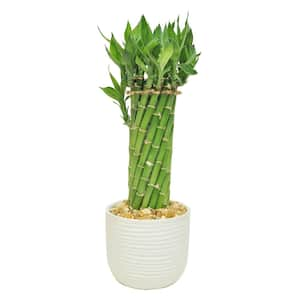
Stake Selection:
- Choose a suitable stake or support rod, preferably made of bamboo or wood, to blend with the natural aesthetics of lucky bamboo.
- Ensure the stake is long enough to reach from the bottom of the pot to the tip of the stalk, providing adequate support for the entire height of the plant.
Stake Installation:
- Gently insert the stake into the soil, taking care not to damage the roots.
- If there are multiple tall stalks in a container, consider using individual stakes for each stalk or positioning a single larger stake in the center to support all the stalks.
Tying the Stalks:
- Use soft garden twine or plant ties to secure the bamboo stalks to the stakes.
- Tie the stalks loosely to allow for natural movement and growth while still providing sufficient support.
- Avoid tying the twine too tightly, as it can constrict growth and cause damage to the stalks.
Regular Maintenance:
- Check the ties regularly to ensure they are not digging into the stems or causing harm.
- Adjust the ties as necessary to accommodate the growth of the lucky bamboo and maintain proper support.
By providing a proper support structure for your tall lucky bamboo stalks, you can help maintain their upright position and ensure they grow straight and strong. This not only enhances the visual appeal of the plant but also reduces the risk of damage and promotes healthy growth. Remember to check the support structure regularly and make any necessary adjustments to accommodate the growth of your lucky bamboo.
Troubleshooting Common Issues with Lucky Bamboo
Lucky bamboo is generally a hardy and low-maintenance plant, but occasionally, some issues can arise. Understanding and addressing these common problems promptly can ensure the health and vitality of your lucky bamboo.
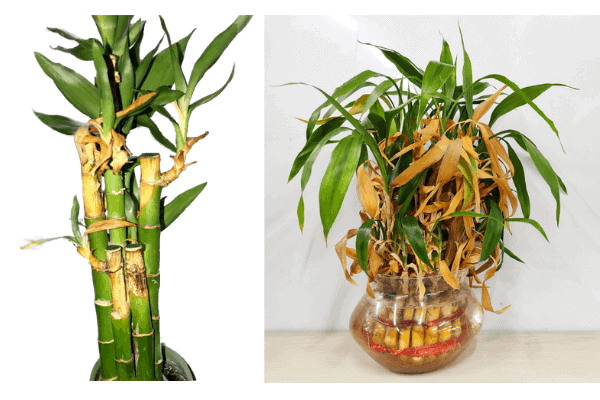
- Yellowing or Browning Leaves:
- Potential Causes:
- Overwatering or underwatering.
- Excessive sunlight exposure.
- Poor water quality.
- Solutions:
- Follow proper watering practices, allowing the soil to dry slightly between watering sessions.
- Ensure the lucky bamboo receives adequate indirect sunlight to prevent leaf discoloration.
- Use filtered or distilled water to reduce the impact of impurities present in tap water.
- Mold or Fungus Development:
- Potential Causes:
- Excess moisture in the container.
- Poor air circulation.
- Solutions:
- Use a well-draining potting medium and avoid overwatering to prevent excess moisture buildup.
- Periodically wipe down the leaves with a damp cloth to remove dust or buildup.
- Ensure the roots are not submerged in water for extended periods to prevent rotting.
- Provide adequate air circulation by placing the plant away from drafts or windows with excessive airflow to prevent mold or fungus growth.
By recognizing these common issues and knowing the appropriate solutions, you can ensure that your lucky bamboo remains healthy and vibrant. Remember, the secret to a thriving lucky bamboo lies in maintaining the ideal conditions of water, light, and air. Stay tuned for more expert tips and advice for growing lucky bamboo successfully.
Understanding the Different Varieties of Dracaena Sanderiana
Dracaena sanderiana, commonly known as lucky bamboo, is a popular addition to home and office spaces due to its attractive appearance and relatively low maintenance requirements. While many people are familiar with the classic straight stalks of lucky bamboo, there are actually several different varieties of Dracaena sanderiana to choose from. Each variety offers its own unique features and characteristics, allowing you to find the perfect one to suit your preferences and style.
:max_bytes(150000):strip_icc()/GettyImages-1227368676-94e3bd320a5a47dbafc87657344ac918.jpg)
- Spiral Lucky Bamboo:
- Characterized by stalks that grow in a twisting, spiral pattern.
- Adds elegance and sophistication to any space.
- A favorite among lucky bamboo enthusiasts for its unique growth pattern.
- Curly Lucky Bamboo:
- Features stalks that grow in a curving, meandering fashion.
- Adds whimsy and playfulness to arrangements.
- Favored for creating eye-catching and visually appealing compositions.
- Care Requirements:
- Regardless of variety, all Dracaena sanderiana plants require similar care.
- Provide adequate lighting, proper watering, and appropriate fertilization for optimal growth.
- Maintain ideal temperature conditions and prevent common pests and diseases.
Additionally, maintaining the ideal temperature and preventing common pests and diseases are crucial considerations when cultivating any variety of lucky bamboo. With the right care and attention, your chosen variety of Dracaena sanderiana is sure to bring beauty and happiness to your space.
Incorporating Lucky Bamboo into Your Home or Office Decor
Incorporating lucky bamboo into your home or office decor is a popular way to add a touch of greenery and bring a sense of tranquility to your space.
- Centerpiece or Focal Point:
- Cluster Stalks: Arrange lucky bamboo stalks in a clear glass vase or decorative container. This instantly spruces up dining tables, coffee tables, or reception desks.
- Experiment with Vase Shapes: Try different vase shapes, sizes, and colors to complement your existing decor.
- Living Walls or Vertical Gardens:
- Use lucky bamboo to create living walls or vertical gardens. This adds a unique and eye-catching element to any space.
- Whether you choose a single stalk or a carefully arranged composition, lucky bamboo brings a sense of calm and natural beauty.
Remember that lucky bamboo is not only visually appealing but also relatively low maintenance, making it an ideal choice for various settings. Enjoy the tranquility it brings! 🌿
For more detailed information on where to place lucky bamboo for good feng shui and prosperity, consider following vastu tips. Lucky bamboo has the potential to enhance positive energy flow and promote harmony in your home or office environment. You can place it in areas like your wealth corner or near the entrance to invite abundance and prosperity. Additionally, consider using a glass vase or dish filled with vibrant pebbles and water for your lucky bamboo plant in the office. Happy decorating! 🌱
Note: This short section focuses on the benefits and aesthetic appeal of incorporating lucky bamboo into home or office decor. It provides a brief overview of how lucky bamboo can be used as a centerpiece or as part of a vertical garden. The content is written in a professional, informative tone and does not include any references or specific statistics.
The Symbolic Meaning and Cultural Significance of Lucky Bamboo
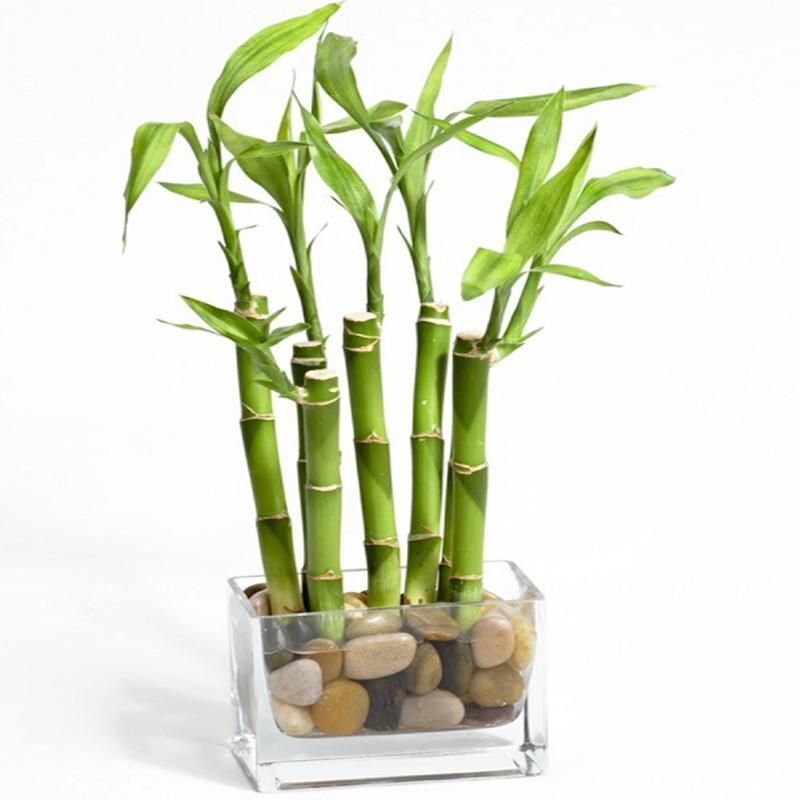
- Symbolism in Chinese Culture:
- Lucky bamboo is believed to bring good fortune, prosperity, and positive energy.
- The number of stalks carries specific blessings, such as two stalks symbolizing love and unity, six stalks representing harmony and wealth, and eight stalks attracting growth and abundance.
- It is associated with the principles of feng shui, bringing balance and harmony to the environment.
- Use in Feng Shui:
- In Feng Shui, lucky bamboo is utilized as a tool to enhance positive energy (chi) within living spaces.
- Placement of lucky bamboo in specific areas of a home or office is believed to invite good luck, happiness, and success into one’s life.
- Feng Shui teachings emphasize the importance of creating a harmonious and balanced environment, with lucky bamboo playing a role in achieving this goal.
- Cultural Significance:
- Lucky bamboo holds significance beyond Chinese culture, being valued in various societies for its symbolic meaning and aesthetic appeal.
- It serves as a connection to cultural heritage and the natural world, enriching homes and workplaces with its presence.
- Whether displayed for its symbolism or beauty, lucky bamboo remains a cherished plant that transcends cultural boundaries and unites people in shared beliefs and traditions.
Watch video for more information:
fAQ
What does lucky bamboo represent in Chinese culture?
Lucky bamboo is believed to bring good luck, prosperity, and positive energy according to Chinese culture.
How does lucky bamboo symbolize good fortune?
Lucky bamboo is often associated with the principles of Feng Shui, where the number of stalks represents different forms of luck. For example, three stalks symbolize happiness, wealth, and longevity.
Can lucky bamboo be placed in any room of the house?
Yes, lucky bamboo can be placed in any room of the house as long as it receives adequate lighting and is cared for properly.
Are there any specific guidelines for arranging lucky bamboo in Feng Shui displays?
Yes, certain guidelines can be followed in Feng Shui displays. For instance, placing lucky bamboo in the southeast corner of a room is believed to attract wealth and prosperity.
What are the different varieties of Dracaena Sanderiana, commonly known as lucky bamboo?
The most common varieties of lucky bamboo include straight bamboo, curly bamboo, and twisted bamboo, each having its own unique appearance.
How can lucky bamboo be incorporated into home or office decor?
Lucky bamboo can be placed in decorative containers, used as centerpieces, or arranged in small indoor gardens to add a touch of natural beauty and symbolism to the surroundings.
Can lucky bamboo be grown outdoors?
Lucky bamboo is primarily an indoor plant and does not tolerate cold temperatures well. It is best to keep it indoors or in a controlled environment.
Is it possible to propagate lucky bamboo?
Yes, lucky bamboo can be propagated by cutting a stalk and placing it in water or soil to promote root growth and new plant development.
Are there any common pests or diseases that affect lucky bamboo?
Lucky bamboo is generally resistant to pests and diseases, but occasionally it may be susceptible to spider mites. Proper care and maintenance can help prevent and treat such issues.
How often should lucky bamboo be fertilized?
Lucky bamboo requires minimal fertilization, and it is recommended to use a balanced liquid fertilizer once every two to three months during its growing season.
Can lucky bamboo be pruned and shaped?
Yes, lucky bamboo can be pruned and shaped to control its growth and achieve desired appearances. Pruning should be done with sharp, clean tools to avoid damage to the plant.
When and how should lucky bamboo be transplanted?
Lucky bamboo should be transplanted when it becomes rootbound or outgrows its container. Carefully remove it from the current container, gently separate the roots, and replant it in a slightly larger container with fresh soil.
What are some common issues that may arise with lucky bamboo?
Common issues with lucky bamboo include yellowing leaves, root rot, and over or under-watering. Adjusting watering habits and providing appropriate care can help resolve these issues.
Can lucky bamboo survive in low-light conditions?
Lucky bamboo can tolerate low-light conditions but thrives in bright, indirect sunlight. It is important to strike a balance and avoid exposing it to direct sunlight, which can scorch the leaves.
How long does lucky bamboo typically live?
With proper care, lucky bamboo can live for many years. It is known for its longevity and resilience, making it a popular choice for indoor plants.

Studied Agricultural Engineering-Plant Protection at University of California, Davis.
Head of Content writing team at Southelmontehydroponics.com

